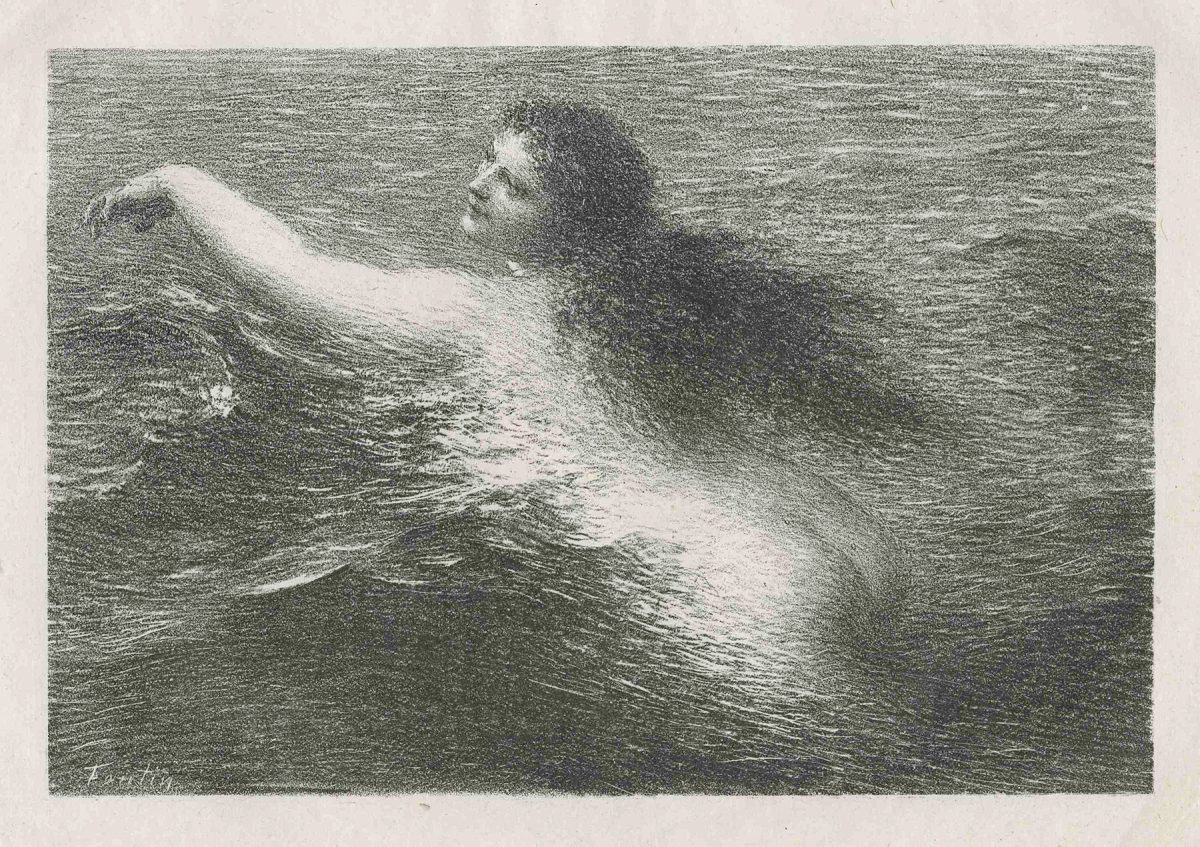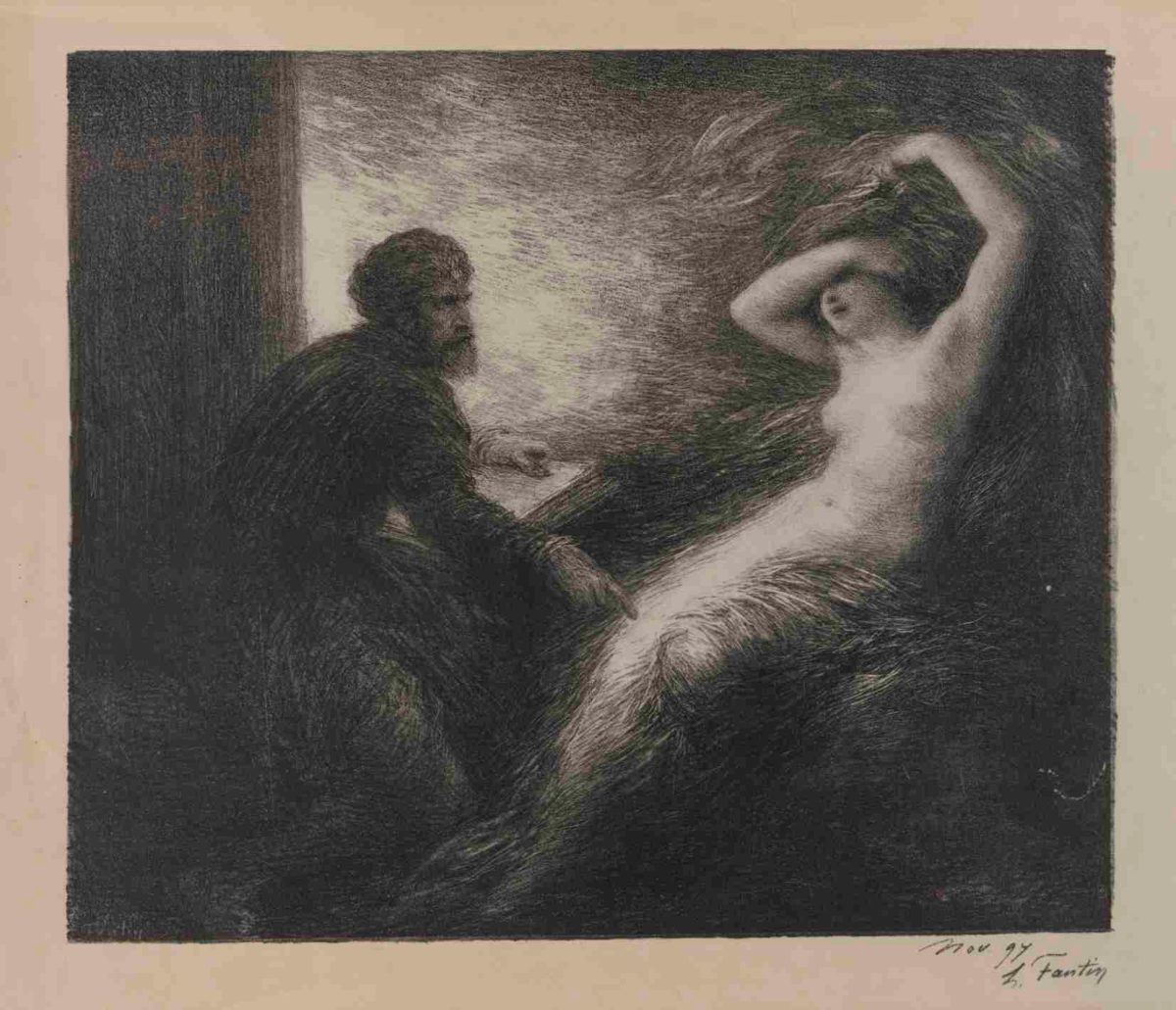Collectors and engravers at the Fondation William Cuendet & Atelier de Saint-Prex were particularly interested in the drawings that Fantin-Latour, a pivotal figure between Romanticism and the avant-garde, transferred to lithographic stone. The successful artist seems to have favored this novel process, which was also used by Camille Corot, after discovering it in 1876. Known as “transfer lithography” or the autographic method, it allowed him to compose his drawings freely, on cheap, light transfer paper rather than the heavy, cumbersome stone. This enabled him to depict naturalistic portraits and to compose intimate scenes or musical evocations, with a distinctive soft light and supple line. These latter qualities are especially present in plates such as Danses (1898) and Ondine (1896), which belonged to the collections of Gérard de Palézieux and of Isabelle and Jacques Treyvaud.
Although best known for his group portraits and flower paintings, Henri Fantin-Latour also produced a significant number of lithographs. Born in Grenoble in 1836, the son of a painter who gave him his first artistic education, Fantin-Latour grew up in Paris from 1841. He drew from an early age, taking classes at a drawing school before continuing his apprenticeship at the Louvre, copying the works of the great masters. He began painting at the age of seventeen, initially producing self-portraits and portraits of his family members. In 1861, he exhibited a painting for the first time at the Salon, where in 1870 he found success with Un Atelier aux Batignolles, a group portrait centered on Édouard Manet, whom Fantin-Latour had gotten to know through his visits to the Louvre. Fantin-Latour's still lifes of flowers also brought him wide renown, particularly among the British public. Although he was friendly with certain of the Impressionists, Fantin-Latour remained aloof from the movement, preferring to follow a more personal path that reflected both his respect for tradition and his interest in the avant-garde. In the 1880s, alongside numerous portraits, he increasingly turned his attention to works of the imagination, making images inspired by mythology and music. Fantin-Latour, who exhibited for the last time in Paris in 1900, died in 1904 at his estate in Buré, Normandy.
Fantin-Latour's beginnings in engraving date back to 1862, when he became one of the founding members of the Société des Aquafortistes, a group that aimed to revive the art of etching. He then tried his hand in lithography. Yet it was not until ten years later, on the occasion of a festival held in Bonn in honour of Robert Schumann, that Fantin-Latour made serious efforts with stone. A great lover of music, and especially that of Wagner, Schumann, Brahms and Berlioz, Fantin-Latour devoted much of his printed work to musical subjects.



